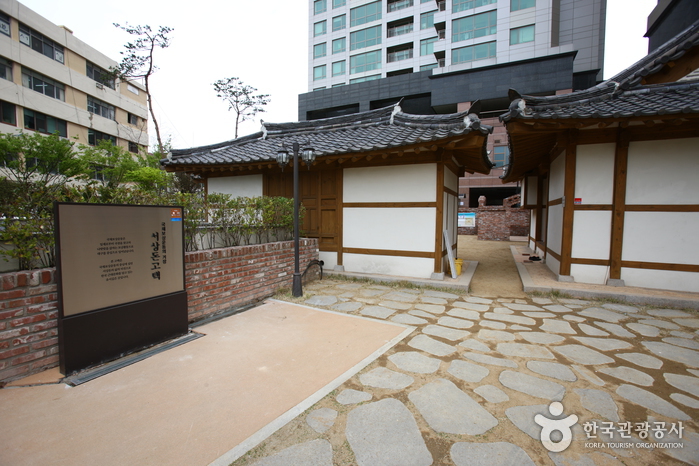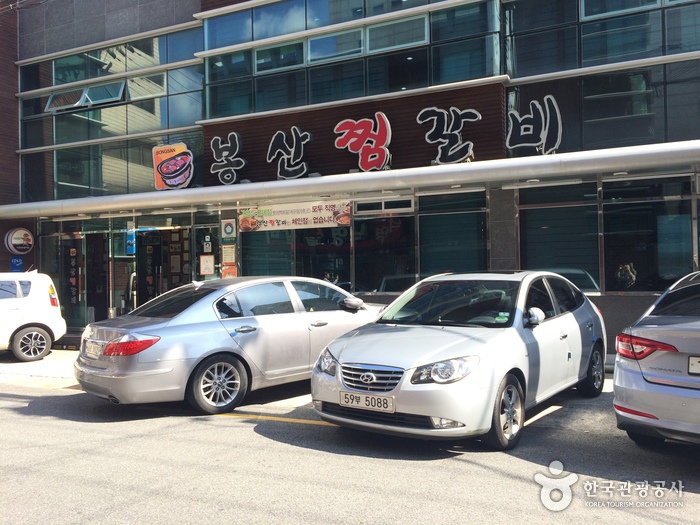House of Seo Sang-don (서상돈 고택)
772.3M 2021-07-01
6-1, Seoseong-ro, Jung-gu, Daegu
+82-53-256-3762
The house of entrepreneur and activist Seo Sang-don is located in the heart of Daegu. In 1907, in an effort to repay national debt and to gain independence from Japan, Seo launched the National Debt Repayment Movement as well as a nationwide campaign calling for people to quit smoking.
In celebration of Seo's leadership, the City of Daegu restored Seo's old house and opened it to the public. The City also built the National Debt Repayment Park and erected a statue of Seo in his honor.
Daegu Gyesan Cathedral (대구 계산동성당)
774.9M 2024-07-31
10 Seoseong-ro, Jung-gu, Daegu
+82-53-254-2300
Daegu Gyesan Cathedral is one of Daegu's main churches, designed by Father Poisnel, who also designed Myeongdong Cathedral and imported stained glass for the windows directly from France. Being located in the city center, the cathedral is especially beautiful when seen at night.
Sanho Jjimgalbi ([백년가게]산호찜갈비)
819.8M 2023-11-13
9-9 Dongdeok-ro 36-gil, Jung-gu, Daegu
053-422-2523
Jjim galbi (braised galbi) is one of Daegu's top ten items, which visitors can experience at the Dongin-dong Jjim Galbi Street. Among the restaurants here, Sanho Jjim Galbi has appeared on various prodcasts, thanks to their tender meat and tasty, spicy sauce. The restaurant uses only the finest meat from domestic stock, cooked with medicinial herbs in the braising process for a taste that is surpreme.
Bongsan Jjimgalbi (봉산찜갈비)
853.7M 2017-11-23
9-18, Dongdeok-ro 36-gil, Jung-gu, Daegu
+82-53-425-4203
Jjimgalbi, steamed beef ribs, is a popular Korean dish. What sets Bongsan Jjimgalbi (봉산찜갈비) apart is that the restaurant serves the ribs in nickel-silver bowls that have higher thermal conductivity, which helps to bring out the best flavor and texture in meat. Furthermore, the popularity of Bongsan Jjimgalbi has given rise to other jjimgalbi restaurants on the same street that is now known as Dongin-dong Jjimgalbi Street. Today, jjimgalbi remains a representative local specialty of Daegu, and one of the most popular Korean dishes among international visitors.
March 1st Independence Movement Road (3·1만세운동길)
876.6M 2023-01-20
Dongsan-dong, Jung-gu, Daegu
March 1st Independence Movement Road is a historical location where Daegu citizens gathered for the independence movement on March 8, 1919, and the midpoint of Daegu Modern Alley Tour Course 2. Passing Cheongna Hill Missionary's House and Jeil Church, you will come to a road with murals of the independence movement. The March 1st Independence Movement Road is a hilly road leading to Gyesan Cathedral. It is also called 90 Stairs because there are 90 steps. On the wall of the stairs, there is an augmented reality (AR) experience zone along with site photos from history. By scanning the QR code is a 3D video that vividly reproduces the independence movement, enabling a realistic experience of history. Follow the signs of the Daegu March 8th Independence Movement marching road to reach the main road and it will lead to the the 100th anniversary monument of the March 1st Movement and the starting point of the March 8 Movement. A guided alley tour is available for free with an online reservation on the official website.
Uniqlo - Lotte Daegu Branch [Tax Refund Shop] (유니클로 롯데대구)
893.6M 2024-04-18
161, Taepyeong-ro, Buk-gu, Daegu
-
Lotte Department Store - Store Daegu Branch [Tax Refund Shop] (롯데백화점 대구점)
893.6M 2024-04-23
161, Taepyeong-ro, Buk-gu, Daegu
-
Ferragamo - Lotte Daegu Branch [Tax Refund Shop] (페레가모 롯데 대구점)
893.6M 2024-04-16
161, Taepyeong-ro, Buk-gu, Daegu
-
Muji - Lotte Daegu Branch [Tax Refund Shop] (MUJI 롯데대구)
893.6M 2024-04-18
B2, Lotte Department Store Daegu Branch, 161, Taepyeong-ro, Buk-gu, Daegu
-
Prada - Lotte Daegu Branch [Tax Refund Shop] (프라다 롯데 대구점)
893.6M 2024-04-16
161, Taepyeong-ro, Buk-gu, Daegu
-


![Sanho Jjimgalbi ([백년가게]산호찜갈비)](http://tong.visitkorea.or.kr/cms/resource/03/2616203_image2_1.jpg)

![Uniqlo - Lotte Daegu Branch [Tax Refund Shop] (유니클로 롯데대구)](http://tong.visitkorea.or.kr/cms/resource/19/2889619_image2_1.jpg)
![Lotte Department Store - Store Daegu Branch [Tax Refund Shop] (롯데백화점 대구점)](http://tong.visitkorea.or.kr/cms/resource/16/2889816_image2_1.jpg)
![Ferragamo - Lotte Daegu Branch [Tax Refund Shop] (페레가모 롯데 대구점)](http://tong.visitkorea.or.kr/cms/resource/25/2889825_image2_1.jpg)
![Muji - Lotte Daegu Branch [Tax Refund Shop] (MUJI 롯데대구)](http://tong.visitkorea.or.kr/cms/resource/30/2883930_image2_1.jpg)
 English
English
 한국어
한국어 日本語
日本語 中文(简体)
中文(简体) Deutsch
Deutsch Français
Français Español
Español Русский
Русский